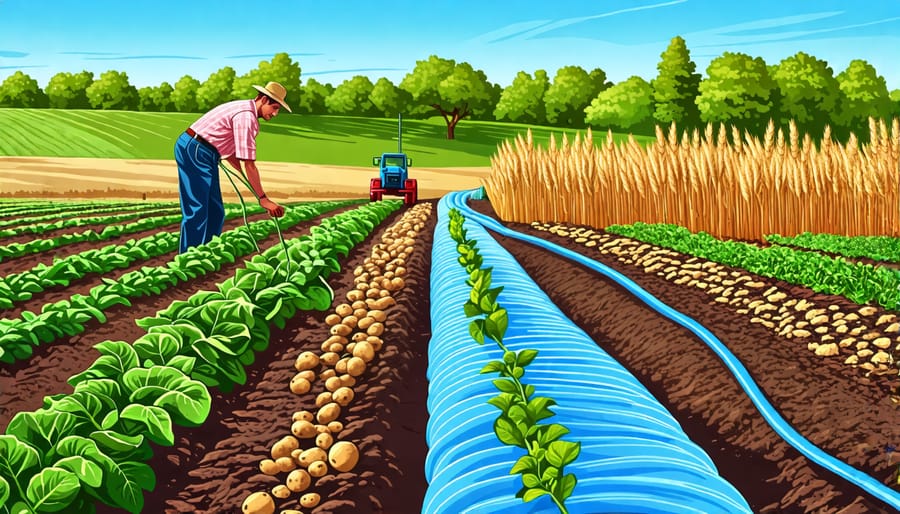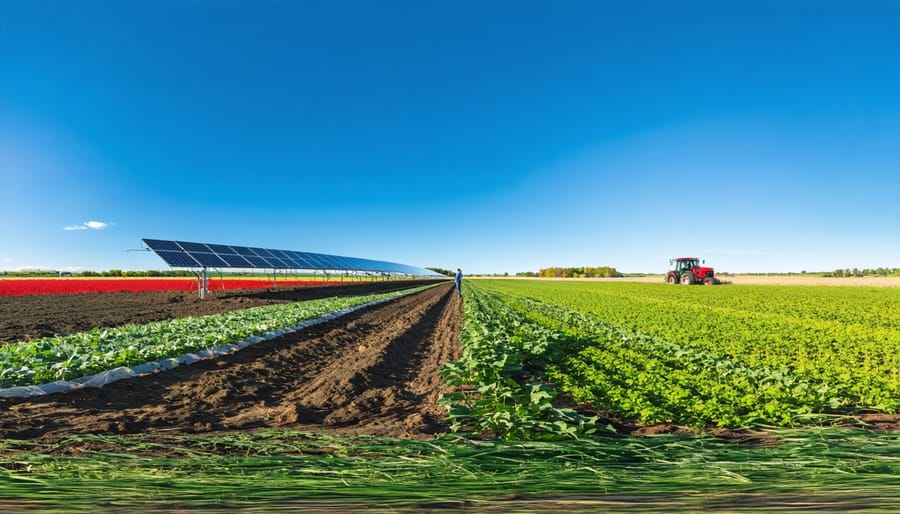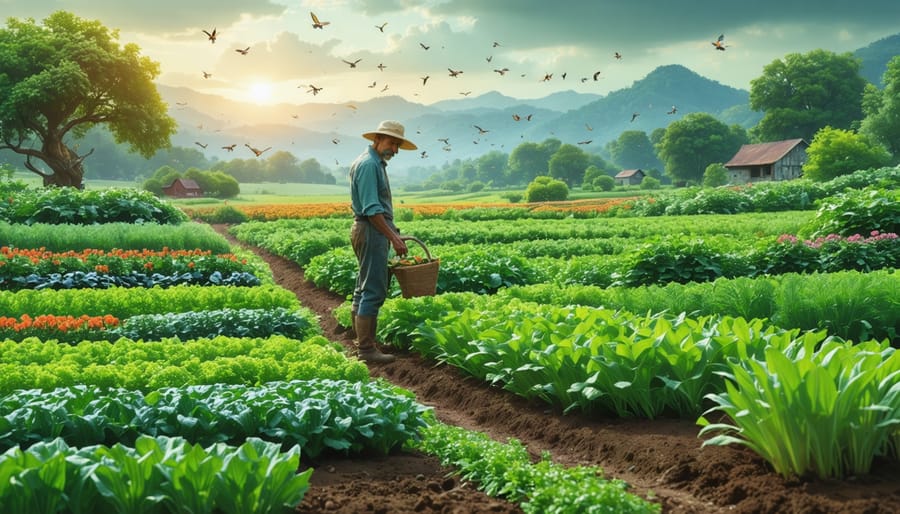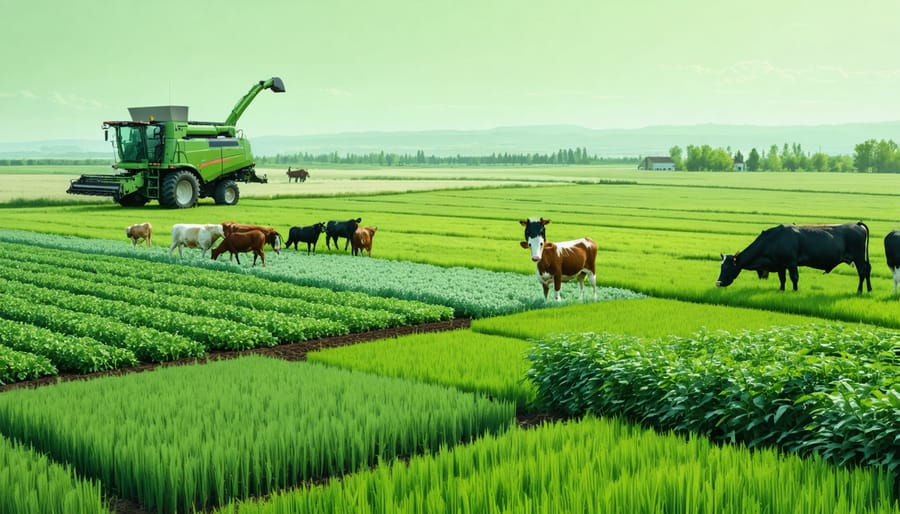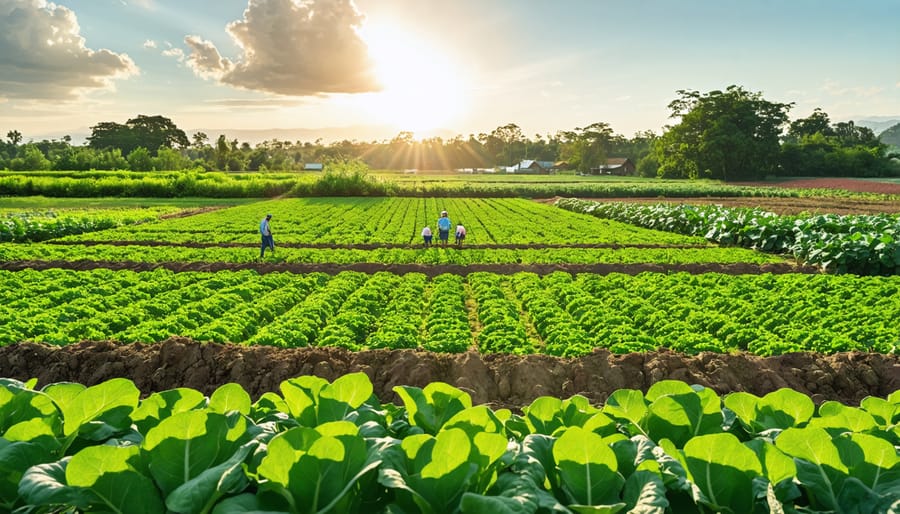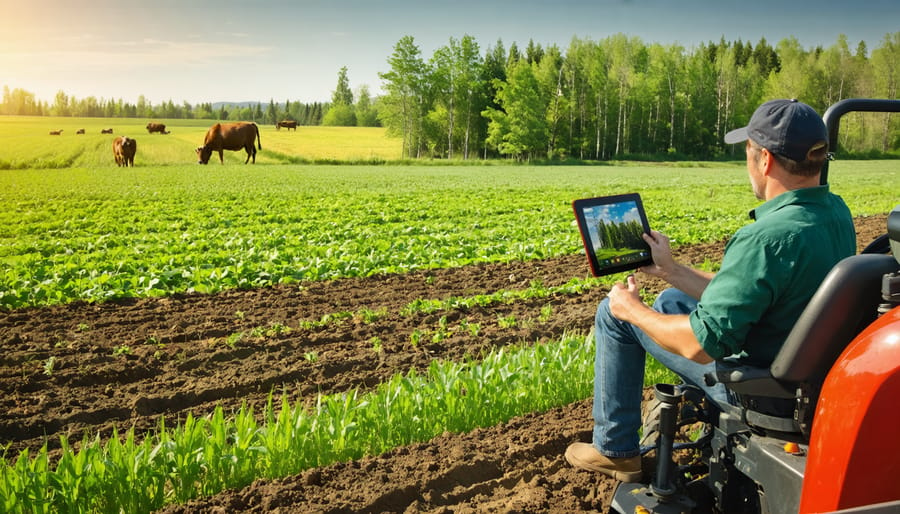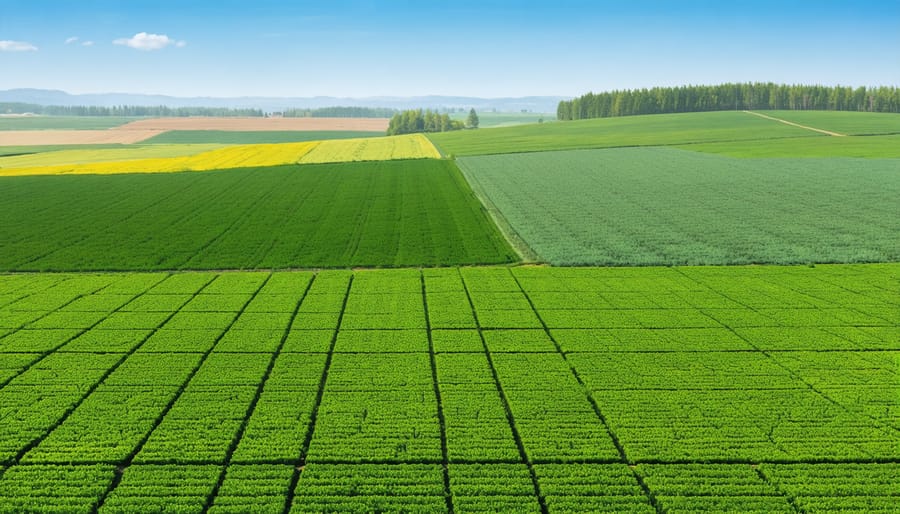Assess your irrigation needs carefully, considering soil type, crop water requirements, field size and layout to determine the most suitable system for your small farm. Compare the costs, efficiency and maintenance needs of drip, sprinkler and surface irrigation options to select the optimal setup for your budget and growing conditions. Implement smart scheduling practices, such as early morning or nighttime watering, soil moisture monitoring and adjusting duration based on weather, to minimize waste and maximize plant uptake. Regularly inspect and maintain your system, checking for leaks, clogs or malfunctions, and invest in water-saving components like pressure regulators, timers and low-flow emitters to boost efficiency and conserve this precious resource on your small Alberta farm.
Assessing Your Farm’s Irrigation Needs
Soil Type and Water Retention
The soil type on your farm significantly impacts water retention and infiltration rates, which are crucial factors in irrigation planning. Sandy soils have larger particles and pore spaces, allowing water to drain quickly and requiring more frequent irrigation. On the other hand, clay soils have smaller particles that hold moisture longer but can become waterlogged if overwatered. Loam soils, a mix of sand, silt, and clay, offer an ideal balance of water retention and drainage. Knowing your soil composition helps determine the most suitable irrigation method and schedule for your crops. Conducting a soil test provides valuable insights into your soil’s properties and can guide you in making informed decisions about irrigation management. By understanding how your soil interacts with water, you can optimize irrigation efficiency, prevent water waste, and create a thriving growing environment for your plants.
Crop Water Demands
Different crops have varying water requirements, influenced by factors such as growth stage, climate, and soil type. In Alberta, commonly grown crops on small farms include wheat, barley, canola, peas, and potatoes. Wheat and barley generally require 400-500 mm of water per season, while canola needs around 450-550 mm. Peas have lower water demands, typically 350-450 mm, whereas potatoes are more water-intensive, requiring 500-700 mm. Vegetable crops like carrots, onions, and lettuce have moderate water needs, usually 350-500 mm per season. It’s crucial to monitor soil moisture levels and adjust irrigation accordingly to meet crop-specific demands while avoiding overwatering. Consulting local agricultural extension services or experienced farmers can provide valuable insights into optimizing irrigation for your specific crops and farm conditions in Alberta.
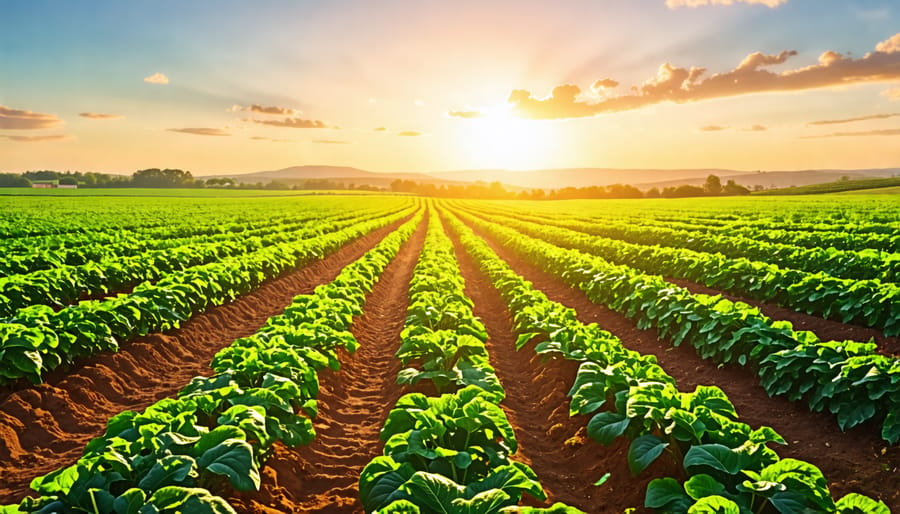
Drip Irrigation Systems
Components and Setup
A drip irrigation system consists of a main water line, pressure regulator, filter, tubing, emitters, and end caps. To set up, connect the main line to a water source and pressure regulator, then attach the filter. Run tubing along plant rows, securing it with stakes. Insert emitters near each plant’s root zone and close the line with end caps. Adjust the regulator for the desired flow rate and check for leaks. Bury or mulch the tubing to protect it from sun damage. With proper installation, a drip system delivers water directly to plant roots, minimizing evaporation and runoff. This efficient method saves water and promotes healthy plant growth, making it an ideal choice for small farms looking to optimize their irrigation practices.
Maintenance and Troubleshooting
To keep your drip irrigation system running optimally, regularly check for leaks or clogs in emitters, pipes, and fittings. Flush the system at the start of each growing season to remove any debris or mineral buildup. Monitor water pressure and adjust as needed to ensure even distribution. Inspect and replace damaged components promptly to prevent water loss and maintain system efficiency. During periods of inactivity, drain the system to avoid freeze damage in colder months. Consult with local irrigation experts or attend community workshops to learn more about troubleshooting common issues and implementing best practices for your specific setup and crops.
Sprinkler Irrigation Options
Portable Sprinklers
Portable sprinkler systems offer small farms in Alberta unparalleled flexibility in irrigation. These mobile units can be easily moved between fields or crop rows, allowing targeted watering exactly where and when it’s needed. This adaptability is especially valuable for diverse crop rotations or farms with irregular layouts. Portable sprinklers also enable farmers to adjust irrigation patterns in response to changing weather conditions or crop growth stages. Whether using lightweight aluminum pipes or durable polyethylene tubing, these systems can be quickly set up and reconfigured as needed. With their versatility and efficiency, portable sprinklers are a smart choice for many small-scale Canadian growers looking to optimize water use and crop yields.
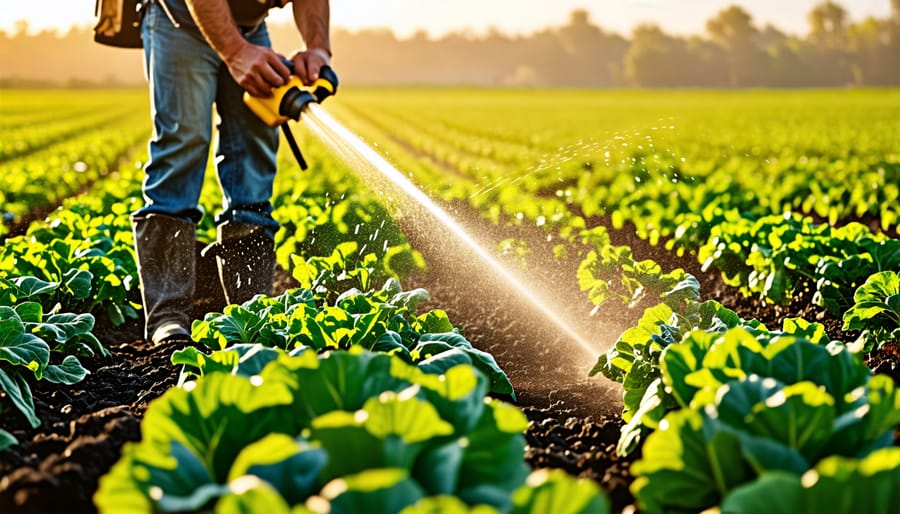
Solid-Set Sprinklers
For small farms with specific crop configurations, solid-set sprinklers offer a permanent irrigation solution. These systems involve a network of sprinkler heads strategically placed throughout the field, providing even water distribution. Solid-set sprinklers are particularly useful for crops grown in consistent patterns, such as orchards or vineyards. By customizing the sprinkler layout to match the crop rows, farmers can ensure efficient water delivery directly to the plant roots. This targeted approach minimizes water waste and promotes healthy plant growth. While the initial installation may require more upfront investment, solid-set sprinklers provide long-term benefits in terms of water conservation and reduced labor costs.
Irrigation Scheduling Strategies
Evapotranspiration-Based Scheduling
Evapotranspiration (ET) data can help you determine the optimal irrigation frequency for your crops. ET measures the water lost through evaporation from the soil and transpiration from plants. By tracking local ET rates, which are influenced by factors like temperature, humidity, and wind, you can estimate your crops’ water needs. Aim to replace the water lost through ET since the last irrigation. Many regional weather stations and agricultural organizations, such as Alberta Agriculture and Forestry, provide ET data. You can also calculate ET using the Penman-Monteith equation with local weather data. Adjust your irrigation schedule based on precipitation and changes in ET rates throughout the growing season. Regularly monitoring soil moisture levels can help you fine-tune your irrigation frequency. By using ET-based scheduling, you can optimize water application, reduce waste, and support your crops’ growth and health.
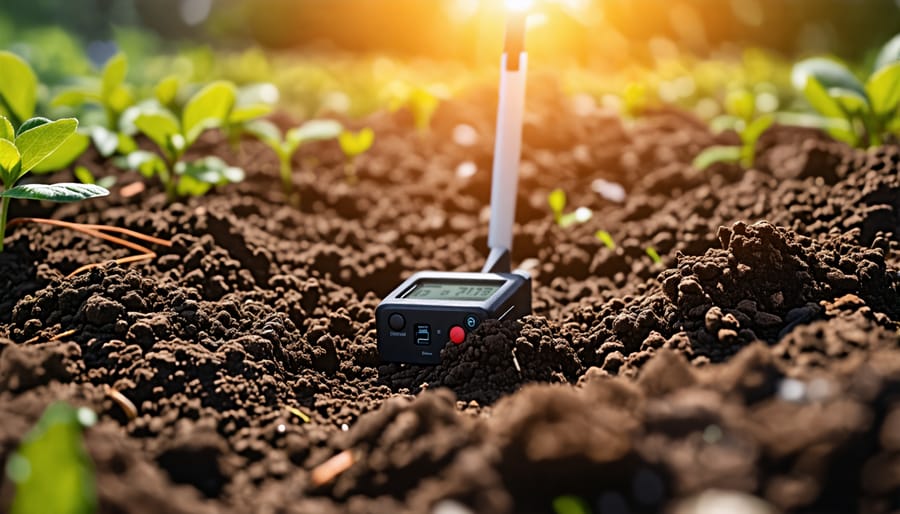
Soil Moisture Monitoring
Soil moisture is a critical factor in determining when and how much to irrigate your small farm. Investing in tools like tensiometers, resistance blocks, or capacitance sensors can help you accurately monitor soil moisture levels at various depths. Alternatively, you can use the simple “feel method” by squeezing a handful of soil to assess its moisture content. Keeping a log of rainfall, irrigation, and soil moisture readings will help you make informed decisions. Aim to maintain consistent moisture in the root zone without overwatering, which can lead to nutrient leaching and waste. By carefully tracking soil moisture, you can optimize your irrigation schedule, conserve water resources, and promote healthy plant growth on your small farm.
Deficit Irrigation Approaches
In times of water scarcity, regulated deficit irrigation can be a viable approach for small farms. This technique involves strategically providing less water than the crop typically requires during specific growth stages. By carefully monitoring soil moisture and plant stress indicators, farmers can optimize water use while minimizing yield impacts. Deficit irrigation is particularly effective for crops like grapes, where controlled water stress can enhance fruit quality. However, it’s crucial to have a deep understanding of crop physiology and to closely observe plant responses. Consulting with local agricultural experts and learning from the experiences of fellow farmers in Alberta can help in successfully implementing deficit irrigation strategies.
Irrigation Efficiency Measures
Mulching and Soil Amendments
Mulching and adding organic matter to your soil are effective strategies to improve water retention and optimize irrigation efficiency on your small farm. Applying a layer of organic mulch, such as straw, leaves, or wood chips, helps reduce evaporation, maintain soil moisture, and regulate soil temperature. As the mulch breaks down, it contributes valuable nutrients and enhances soil structure. Similarly, incorporating compost, aged manure, or other organic amendments into your soil improves water retention by increasing its organic matter content. This allows the soil to absorb and hold more water, reducing the frequency of irrigation and promoting healthier plant growth. By implementing these practices, you can create a more resilient and water-efficient growing environment on your small farm, ultimately conserving resources and supporting the long-term sustainability of your operation.
Windbreaks and Shade Structures
Windbreaks and shade structures are valuable tools for reducing evaporation and preserving soil moisture on small farms in Alberta. By strategically placing trees, shrubs, or artificial barriers around crops, farmers can shield them from drying winds and intense sunlight. This not only preserves soil moisture but also creates a more favorable microclimate for plant growth. Shade structures, such as shade cloth or natural canopies, can further reduce water loss by minimizing direct exposure to the sun. Implementing these measures helps optimize irrigation efficiency, conserve water resources, and promote healthier, more resilient crops. As an added benefit, windbreaks can also protect against soil erosion and provide habitat for beneficial insects and wildlife. By incorporating windbreaks and shade structures into their irrigation management strategies, small farmers in Alberta can cultivate thriving, sustainable agricultural systems while responsibly stewarding precious water resources.
Conclusion
In conclusion, efficient irrigation is crucial for the success and sustainability of small farms in Alberta and throughout Canada. By assessing your farm’s unique needs, selecting the most appropriate irrigation system, implementing effective scheduling strategies, and adopting water-saving techniques, you can optimize your water usage and improve crop yields. Remember, investing in efficient irrigation not only benefits your farm’s bottom line but also contributes to the conservation of our precious water resources. As responsible stewards of the land, it is our duty to prioritize sustainable practices that will ensure the long-term viability of our agricultural communities. We encourage all small farm owners to take action and implement these recommended irrigation strategies. Together, we can build a more resilient and prosperous future for Canadian agriculture, one drop at a time.

